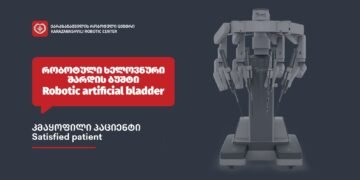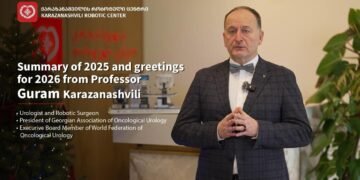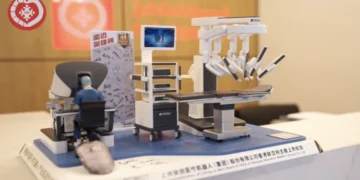In the summer of 2018, a highly complex surgery performed by Professor Guram Karazanashvili attracted significant interest from American colleagues when the video recording of the procedure was presented at the American Urological Association (AUA) Congress. The surgery was recognized as an innovative technique for the global urological community.
While the renowned Georgian surgeon was receiving congratulations from the international medical community, it turned out that some Georgian urologists did not fully understand the novelty of Karazanashvili’s surgical technique. Some even expressed disappointment over what they perceived as “undeserved” recognition.
To clarify the matter, we decided to publicly share the content that was published about Karazanashvili’s innovation in the Journal of Urology by the American Urological Association:
Peritoneum-, Nerve-, and Apex-Sparing Extraperitoneal Radical Cystoprostatectomy with Orthotopic Neobladder Reconstruction
Introduction:
Preserving the peritoneum during radical cystoprostatectomy and extraperitonealizing the orthotopic neobladder has been shown in several publications to reduce hospitalization time, facilitate earlier recovery, and minimize bowel-related complications.
Postoperative urinary incontinence and impotence are key factors that negatively affect quality of life. The standard nerve-sparing technique used during radical prostatectomy and cystectomy does not always result in the preservation of erectile function, even though quality of life is an independent prognostic factor that impacts postoperative survival.
Therefore, the radical cystoprostatectomy technique requires refinement.
The goal of this approach was to combine several modified, tissue-sparing surgical techniques into a single procedure, aiming to reduce bowel-related complications, and improve postoperative urinary continence and erectile function.
Methods:
The video documents the surgical procedure on a 58-year-old male patient diagnosed with muscle-invasive bladder cancer, localized on the lateral wall of the bladder. The patient was sexually active and strongly desired preservation of erectile function. He was also highly motivated to undergo orthotopic neobladder reconstruction.
Results:
During retrograde radical cystoprostatectomy, the goal was to preserve as much of the peritoneal tissue covering the posterior bladder wall as possible. After anatomical division of the dorsal venous complex, the prostatic fascia was incised ventrally to preserve the part containing the neurovascular bundles and their branches.
This also facilitated the preservation of the delicate apex of the prostate.
To spare the neurovascular bundles and surrounding tissues, dissection was performed under direct visual control, carefully avoiding damage and following close to the surface of the seminal vesicles.
The peritoneal cavity remained closed until the end of the radical cystectomy. An orthotopic neobladder was constructed and completely extraperitonealized. The peritoneal cavity was closed almost hermetically.
Conclusion:
The simultaneous application of several modified, tissue-sparing techniques during radical cystoprostatectomy is feasible.
This approach may improve patient outcomes by reducing bowel-related complications and enhancing quality of life, urinary continence, and erectile function post-surgery.
If any uncertainty remains among Georgian colleagues, we cite the evaluation of Professor Zaal Kokaia of Lund University, a successful Georgian physician himself, regarding Karazanashvili’s innovation:
“The integration of existing methods and the creation of a new approach that improves the patient’s quality of life can be considered innovative—and even more significant than any of the individual methods alone. This reflects one of the key directions in modern medicine.
Such an approach may even lead to patents, which in itself is a sign of novelty and innovation. The ability to see this opportunity, to develop and implement an integrated methodology, is a mark of highest professionalism and creative thinking!”







